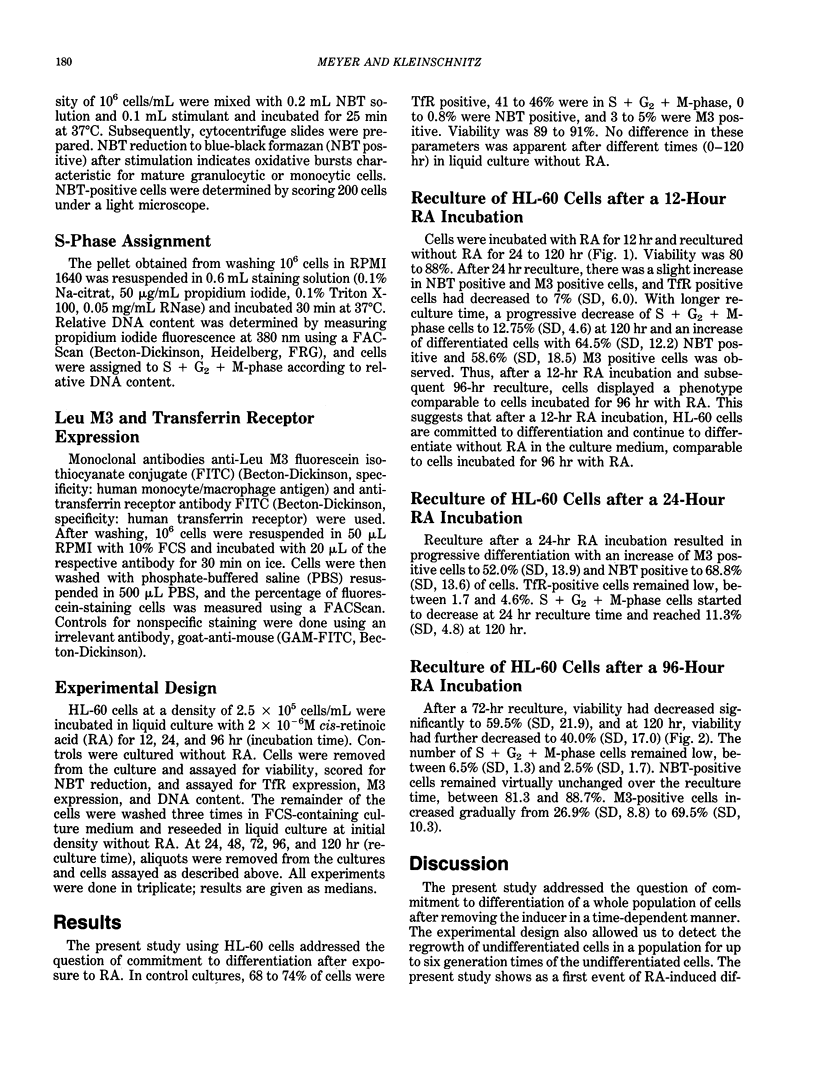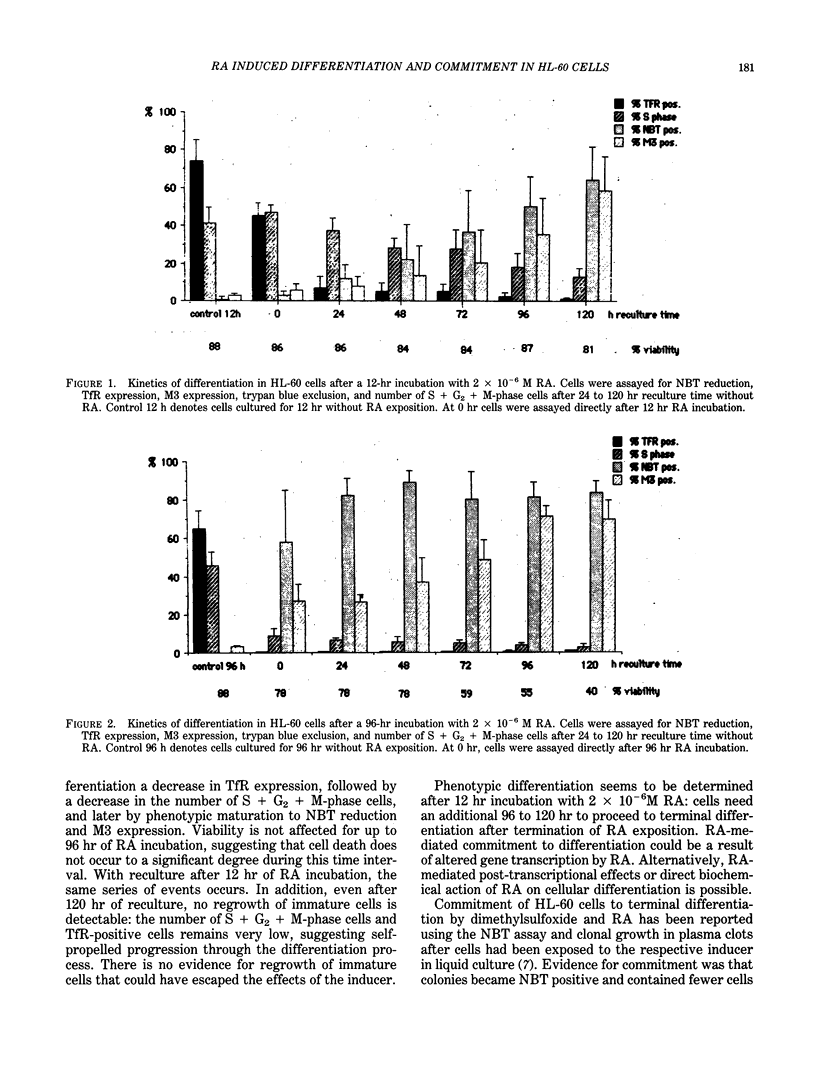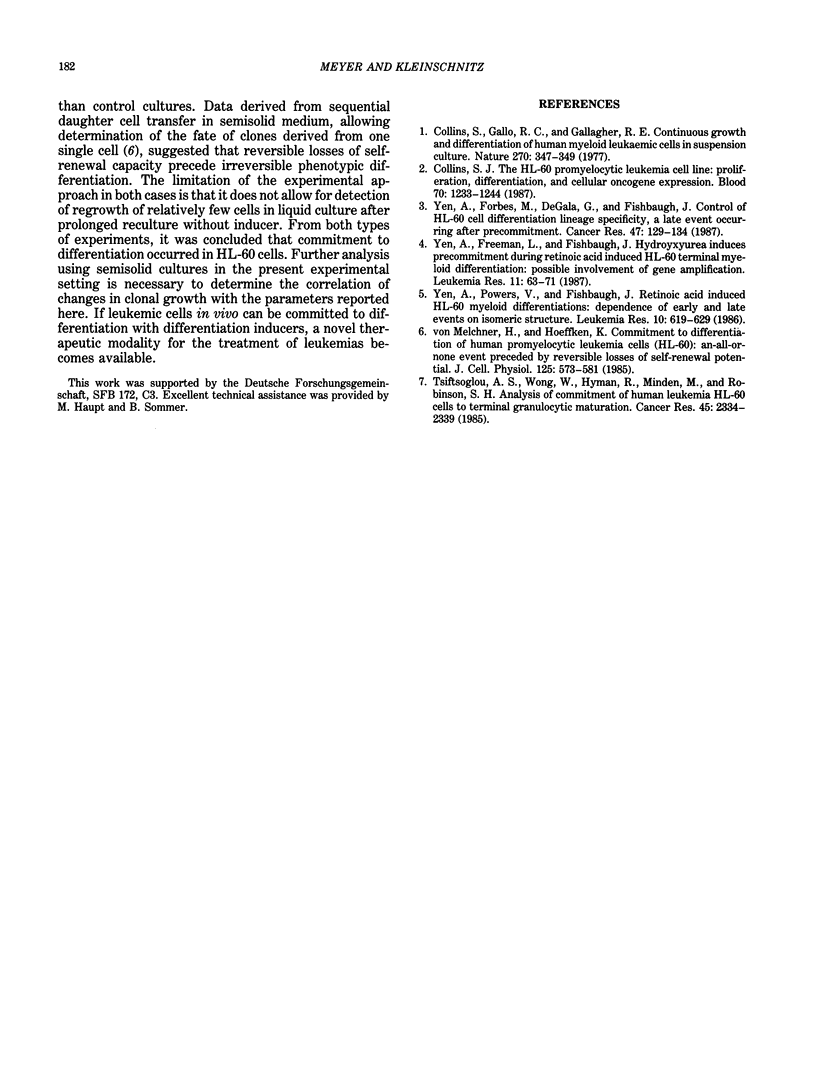Abstract
Human leukemic HL-60 cells are an established model for studies of differentiation induction. Retinoic acid (RA), 2 x 10(-6) M, was used to induce terminal differentiation, assayed as nitroblue tetrazol reduction (NBT) and expression of monocytic surface antigens, which were detected by monoclonal antibody Leu M3. In addition, transferrin receptor expression and the number of S + G2 + M-phase cells were determined. With a 12-hr RA incubation, only a decrease of transferrin receptor expression was found, with no change in other parameters. At least 96 hr RA incubation was necessary to induce terminal differentiation, with most cells being positive for NBT and M3. Cells induced with RA for 12 hr and subsequently recultured in liquid culture gradually expressed the differentiated phenotype and lost transferrin receptor expression. The number of S + G2 + M-phase cells in the cultures decreased drastically. After 12 hr RA exposure and 120 hr reculture without RA, the differentiation profile was comparable to that of cells that had been induced with RA for 96 hr. In reculture for up to 120 hr there was no evidence of loss of viability or regrowth of possibly residual undifferentiated cells. From these studies, we conclude that HL-60 cells become committed to terminal differentiation after half a generation-time exposure to RA and remain committed for at least six generation times.
Full text
PDF



Selected References
These references are in PubMed. This may not be the complete list of references from this article.
- Collins S. J., Gallo R. C., Gallagher R. E. Continuous growth and differentiation of human myeloid leukaemic cells in suspension culture. Nature. 1977 Nov 24;270(5635):347–349. doi: 10.1038/270347a0. [DOI] [PubMed] [Google Scholar]
- Collins S. J. The HL-60 promyelocytic leukemia cell line: proliferation, differentiation, and cellular oncogene expression. Blood. 1987 Nov;70(5):1233–1244. [PubMed] [Google Scholar]
- Tsiftsoglou A. S., Wong W., Hyman R., Minden M., Robinson S. H. Analysis of commitment of human leukemia HL-60 cells to terminal granulocytic maturation. Cancer Res. 1985 May;45(5):2334–2339. [PubMed] [Google Scholar]
- Yen A., Forbes M., DeGala G., Fishbaugh J. Control of HL-60 cell differentiation lineage specificity, a late event occurring after precommitment. Cancer Res. 1987 Jan 1;47(1):129–134. [PubMed] [Google Scholar]
- Yen A., Freeman L., Fishbaugh J. Hydroxyurea indices precommitment during retinoic induced HL-60 terminal myeloid differentiation: possible involvement of gene amplification. Leuk Res. 1987;11(1):63–71. doi: 10.1016/0145-2126(87)90106-8. [DOI] [PubMed] [Google Scholar]
- Yen A., Powers V., Fishbaugh J. Retinoic acid induced HL-60 myeloid differentiation: dependence of early and late events on isomeric structure. Leuk Res. 1986;10(6):619–629. doi: 10.1016/0145-2126(86)90264-x. [DOI] [PubMed] [Google Scholar]
- von Melchner H., Höffken K. Commitment to differentiation of human promyelocytic leukemia cells (HL60): an all-or-none event preceded by reversible losses of self-renewal potential. J Cell Physiol. 1985 Dec;125(3):573–581. doi: 10.1002/jcp.1041250329. [DOI] [PubMed] [Google Scholar]


